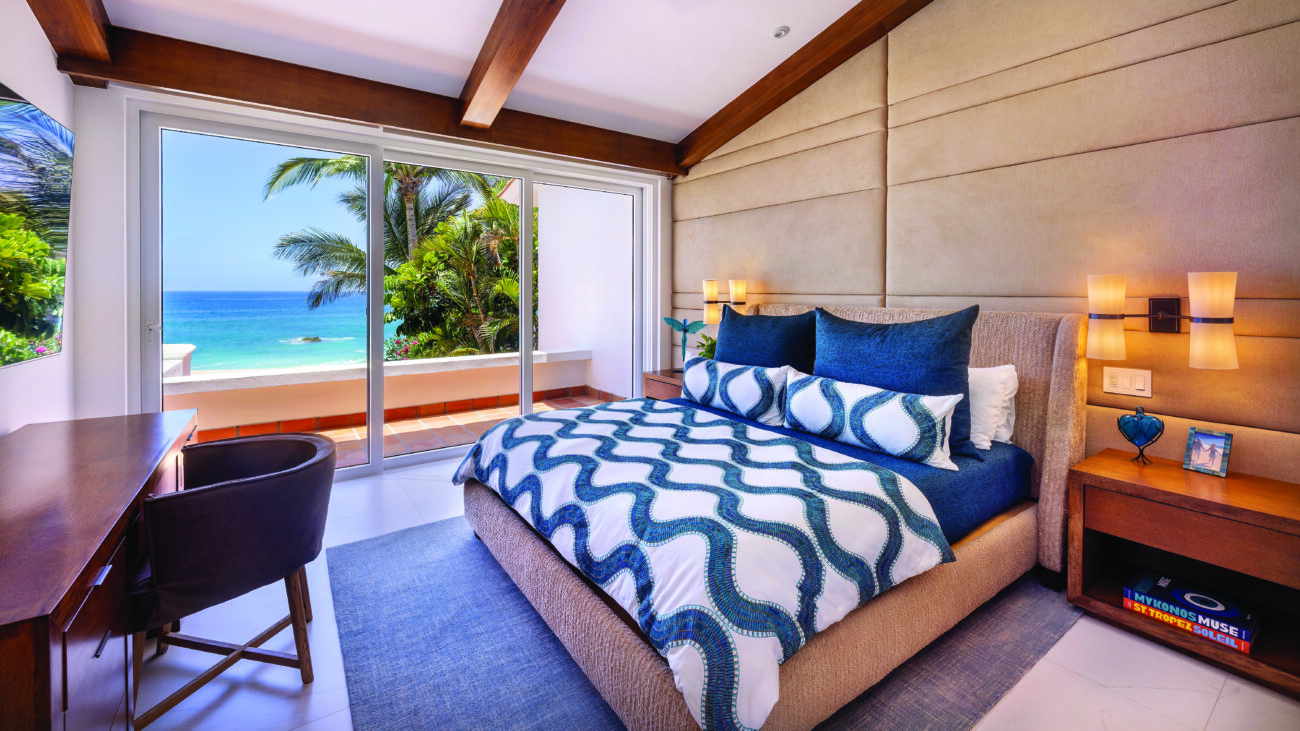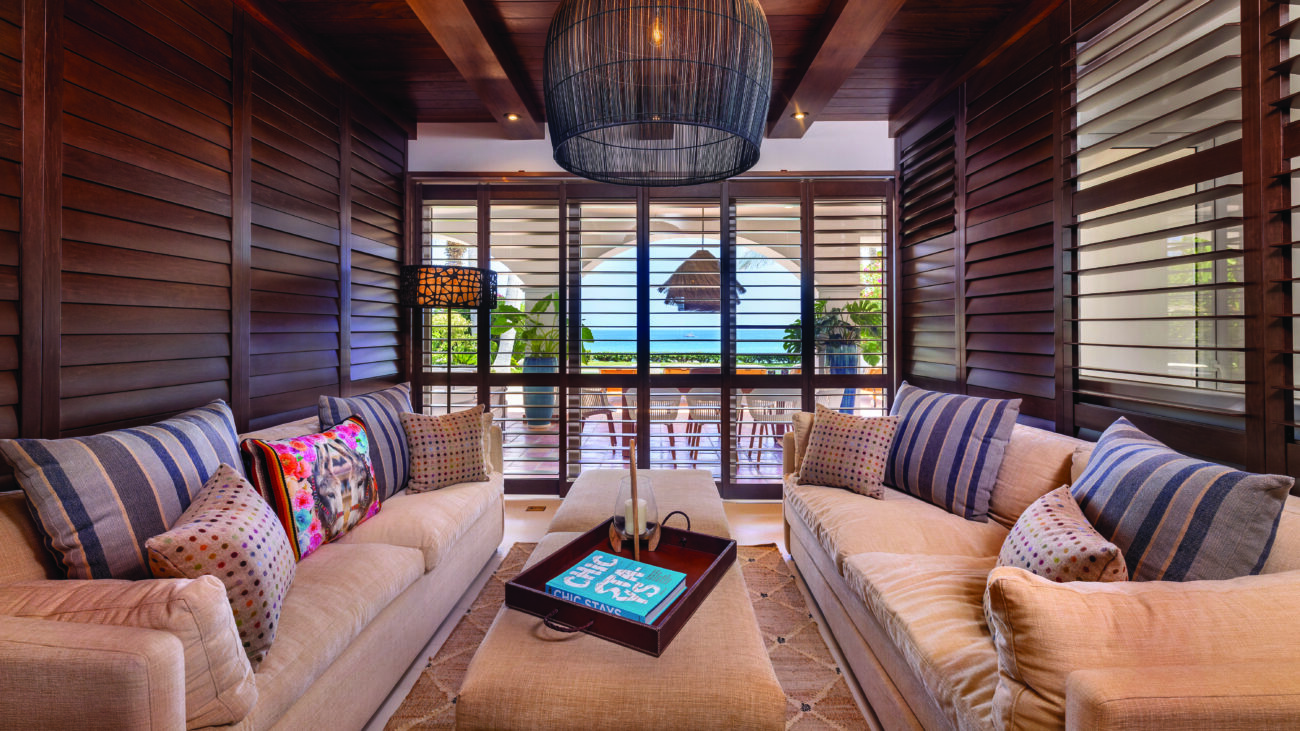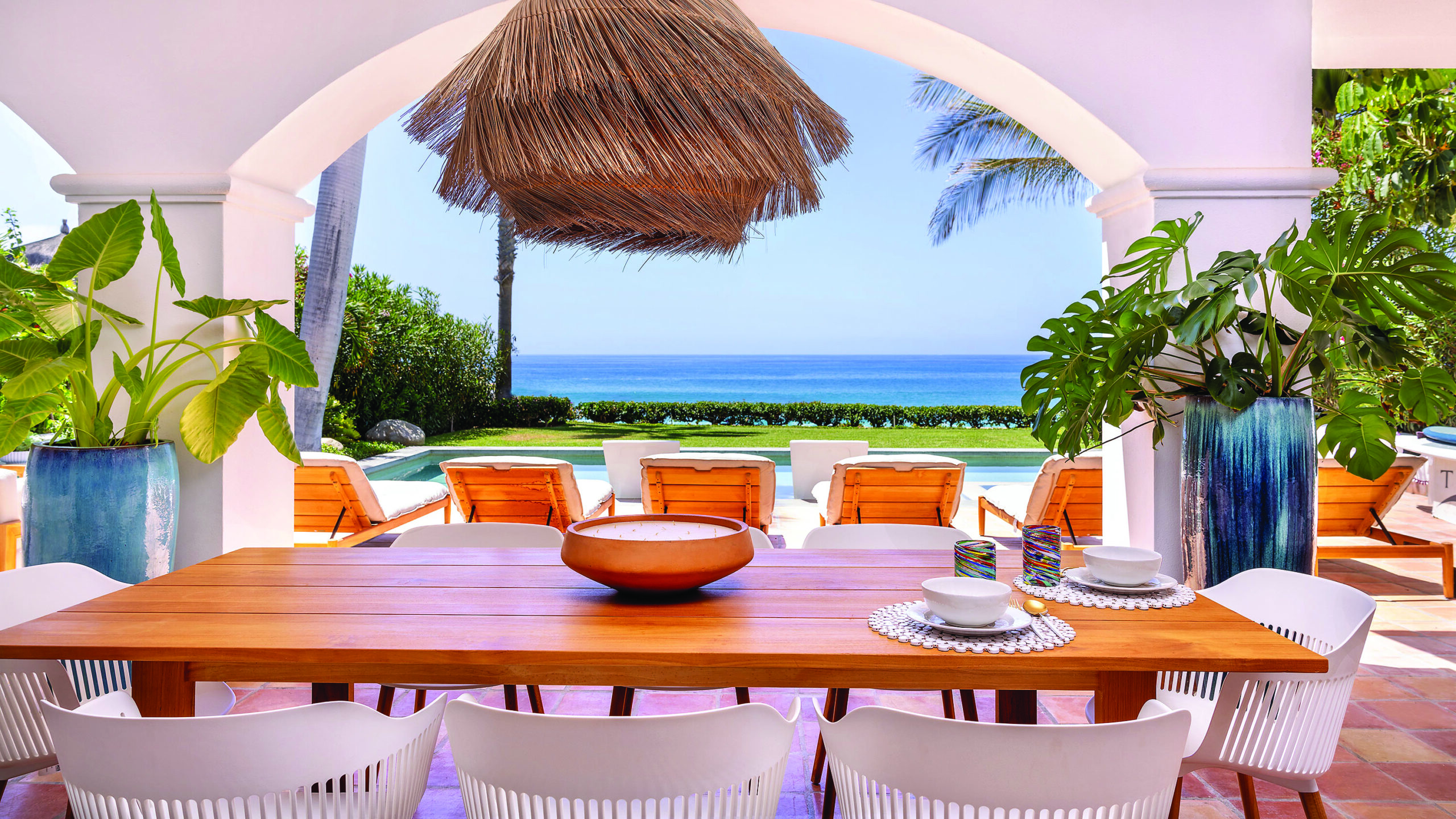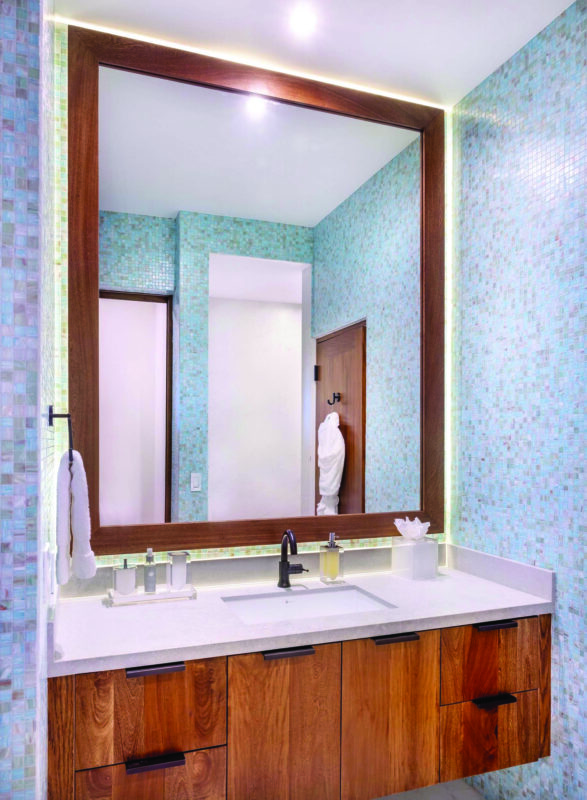|
Getting your Trinity Audio player ready...
|
Designing your home with health and wellness as a key factor for design is a trend that is gaining popularity. Since the lockdown, many are working from home, and it is crucial that we rethink how we are functioning in our spaces.

Interior Designer
Wellness-focused design involves lighting, materials, air and sound quality, neutral color palettes, biophilic design (connecting architecture and nature), greenery, and outdoor-indoor space integration—to name just a few key design areas. The goal of wellness design is to create interiors that support the physical, mental, and social well-being of the occupants.
In Los Cabos, we are blessed with a year-round abundance of clear skies and direct sunlight. Views of the sea and mountains are all around us, and well-designed courtyards and patio spaces can increase our happiness.
Some of the benefits of wellness design include improved mood, productivity, creativity, and immunity, as well as reduced stress, anxiety, and fatigue. There are many ways to incorporate wellness design into your home, whether you are building a new one or renovating an existing one. Here are some examples of wellness design elements for a healthy home:

Healthy Materials
The products and materials in your home can pollute the air you breathe. Choose natural, organic, and low-VOC materials that are free of harmful chemicals and allergens. For example, use natural clay or stone flooring, and opt for paints, sealants, and adhesives that are green certified.
Clean Indoor Air
A healthy home has clean air with plenty of ventilation and minimal pollutants. Install high-efficiency air filters, humidifiers, dehumidifiers, and air purifiers to improve the air quality in your home. You can also use plants, salt lamps, beeswax candles, and essential oils to purify and freshen the air naturally.
Sanitary Surfaces
On the surface, wellness design makes sanitization a top priority in all areas of the home. Use antimicrobial and easy-to-clean materials such as marble and granite, quartz, and stainless steel.
Circadian Lighting
Lighting affects your mood, energy, and sleep quality. Use natural light as much as possible, and avoid harsh or artificial light sources. You can also use smart lighting systems that adjust the color temperature and intensity of the light according to the time of day and your circadian rhythm. For example, use warmer and dimmer light in the evening to prepare your body for sleep, and use cooler and brighter light in the morning to wake you up.
Sleep Chamber
Your bedroom should be a place where you can relax and recharge. Make sure your bedroom is dark, quiet, and comfortable. Use blackout curtains, soundproofing, and white noise machines to block out any external noise and light. Use organic bedding, pillows, and mattresses that are breathable and hypoallergenic. You can also use aromatherapy, meditation, and music to create a soothing atmosphere.
Biophilic Design
Biophilic design is the practice of connecting architecture and nature to enhance human well-being. You can use biophilic design elements such as plants, water features, natural materials, textures, patterns, and colors to bring nature into your home. You can also use windows, skylights, and sliding doors to create a seamless transition between indoor and outdoor spaces. Studies have shown that biophilic design can reduce stress, blood pressure, and heart rate, as well as improve mood, cognition, and creativity.
Spiritual Spaces
A healthy home should also have a space where you can practice your spirituality, whether it is yoga, meditation, prayer, or any other form of self-care. You can create a spiritual space by dedicating a corner, a room, or a garden to your spiritual practice. Decorate your spiritual space with items that inspire you, such as candles, crystals, statues, books, or art. Use music, incense, or diffusers to create a calming ambiance.
The home featured I designed recently sits on the beach in Palmilla and embodies all that we love about being beside the sea. A natural color palette along with the use of natural materials creates a harmony of relaxation. Portholes on the doors along with colored glass windows add a nautical vibe, reminding us that we are at the beach. The downstairs den has all four walls clad in wood shutters with a Rosa Morada wood plank beamed ceiling, creating a chic beach hut vibe. The primary bedroom is on the main floor where sound intrusion was a problem. This was easily solved by upholstering the bed wall in a soft sandy beige chenille fabric that creates a soundproof quality to the sleeping chamber.
Wellness design is not a one-size-fits-all approach but rather a personalized and holistic one that considers your needs, preferences, and lifestyle. By designing your home for wellness, you can create a space that nurtures your body, mind, and soul.


